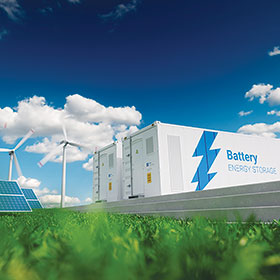

There is a buzz in the technology world around the development of smart cities. There are programmes in place for the use of advanced technology for public protection, transportation, medical services, more efficient energy delivery and much more.
South Africa’s leaders have pushed us to open our minds to the possibilities around new smart cities. However, the more significant and current challenge is transitioning from our current state. Globally, the traditional electricity utility business model is being threatened by the uptake of renewable energy, but partnerships are solving many of the threats and opening up opportunities.
If we let our imaginations run wild in the local context – and imagine the possibilities that come from having the cheapest energy in the world – the creative minds amongst us could have a field day. Here’s one creative mind’s simple plausible concept, if power was cheap enough.
First, we imagine – watering the Karoo all year round
Imagine for a second the very plausible possibility of cheap renewable energy in the context of water shortages that are projected to worsen over the years. Think of the current Karoo crisis. Now imagine the water desalinated and pumped from the coast via pipeline into the Karoo. Imagine desalination pumps purifying the water for consumption and reviving the desert. Imagine lush, fertile land for animal husbandry, agriculture and beautification.
Plausible, yes, but barriers aplenty. The most significant barrier: expensive energy. The solution: a partnership between the tech industry for less energy-intensive systems across the board and state-owned enterprises for the much-needed guidance and blessing to see it through. That’s just one solution with huge implications for our future of scarce water.
Second, we assess. The solution providers for today’s possibilities: batteries and utility companies
In the early days of the motor industry, batteries played a crucial role in the widening of our travel range. Affordable cars gave workers the opportunity to work further, travel, explore and develop.
Today, once again, batteries sit at the heart of widening our range not just to travel – but to build new cities. In the UK, battery installations are primarily being deployed to supply services to the national grid. Such ancillary services are increasingly essential to help match supply and demand.
Also in the UK, there are the beginnings of ‘hybrid’ renewable energy power plants, where batteries are installed alongside solar farms and wind farms. Large-scale battery banks are particularly crucial for the economics of solar farms, which can push down power prices around midday by peaking at the same time. Instead of exporting immediately, hybrid farms can use reliable batteries to build super energy banks to store power to distribute later.
In other parts of the world, such as South Australia, batteries are being used to make the grid more resilient and avoid blackouts. In South Africa, local utilities, renewable energy providers and super battery banks can be used to electrify remote locations and provide the energy to build the vision of new cities. Cities with reliable transport networks, ample water, tech hubs to develop localised solutions, and so on.
Finally, we work. Turning threats into allies
Globally, the traditional electricity utility business model is being threatened by the uptake of renewable energy. However, utilities are responding swiftly and effectively by partnering and reinventing their role. The challenges facing utilities are immense, but the partnerships with independent energy generators and battery companies are yielding positive results. When compared with other technologies such as gas generation and capacitor banks, the current trajectory of falling battery storage costs makes batteries the long-run solution.
The International Energy Agency estimates that by 2035, developing countries will make up 80% of both total energy production and consumption globally. A substantial amount of this new generation will come from renewable sources stored in batteries. It makes sense to be central to the solution.
While the cost of renewable generation continues to drop, effective use of these renewable energy resources requires reliable energy storage, especially in regions with poor grid infrastructure.
Hard at work already – Forbatt lead acid batteries turning the vision into reality
Forbatt lead acid batteries have been at the heart of many projects that require reliable energy storage. Lead acid batteries are still the battery of choice for their cost and stability. However, two things are key to Forbatt being the battery of choice for serious energy storage projects.
The first is build quality. A poorly built and assembled battery is a liability. Over the years more and more projects have taken on the Forbatt brand because the batteries are dependable and robust.
The second reason Forbatt is the battery of choice is return on investment. While the brand is not the cheapest, it does perform at peak power for one of the longest periods, making it one of the most cost-effective on the market. Where power backup and energy storage are critical, the specialists turn to Forbatt.
Whether you are a utility or private sector company, batteries are once again at the heart of the opportunity to expand society. In many regions across the globe, battery storage already assists in the role of balancing the electricity grid, particularly as an alternative to traditional peaking power solutions such as diesel, gas and pumped storage. Grid-scale battery storage can quickly come online, assisting with time-shifting, spinning reserve, frequency regulation and load following.
We look forward to the development of appropriate alliances and partnerships to help our country move into new markets and realise the vision that will benefit all in South Africa.
| Tel: | +27 11 469 3598 |
| Email: | [email protected] |
| www: | www.forbatt.co |
| Articles: | More information and articles about Forbatt SA |

© Technews Publishing (Pty) Ltd | All Rights Reserved